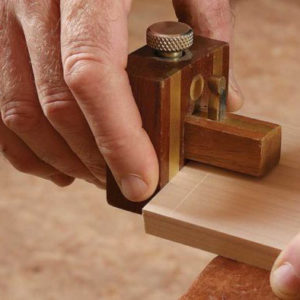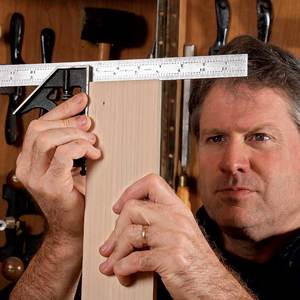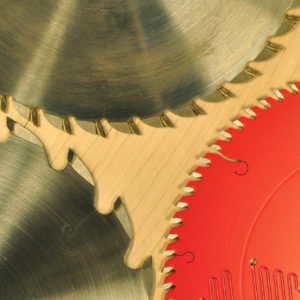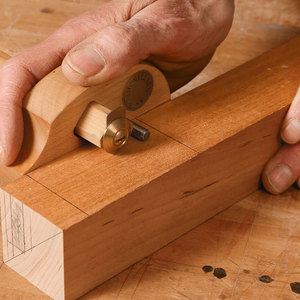X-Acto - Tool Review of the X-Acto No. 1 Knife
The X-Acto No. 1 knife scored highly in our tests. The low cost makes it a perfect first knife.
X-Acto Knife No. 1
The marking knife seems like such a simple tool that it would be easy to dismiss it as little more than a blade and a handle. But we all know better: Marking out with a knife instead of a pencil means that you care about the details. So it makes sense to focus on the details when choosing the knife. I gathered 16 different varieties and put each knife through five tests, each a real-world woodworking task relating to scribing, dovetails, mortises, banding, and inlay.
Overall, the X-Acto’s thin, flexible blade left a deep, narrow line, carried a line easily around a corner, and was nimble enough to trace delicate inlays. The slim cylindrical handle fit comfortably in the hand and in an apron pocket. However, the low cost of the X-Acto makes it a perfect first knife. It may be a long while before you need a second. Here how it scored in my tests:
Scoring a line—With the blade riding against a combination square, I struck a line across 5-in.-wide pieces of walnut and curly maple. I was looking for quality of line in both softer and harder material.
Results: Excellent in walnut, excellent in maple
Dovetailing—I marked out a pin board for a set of narrowly spaced tails across a 6-in.-wide piece of 3/4-in. stock. The narrow spacing tested each knife’s ability to strike a line in confined quarters.
Results: Very good
Laying out for a hinge mortise—I set a 1-in. by 2-1/2-in. hinge against the edge of a walnut board and traced it out. This involves cutting both with and across the grain. I set the marking knife on the edge and cut back to the rear of the plate. Then I removed the hinge and made the lines deeper by running the knife in the channel. This tests the knife’s ability to track in an already established groove.
Results: Very good
Marking out for a banding—I scored one line running all the way around a tapered walnut table leg, pulling the knife away from me. I then ran a second line with the knife coming toward me. This test helped me gauge the ease of handling the knife and whether both sides of the blade could easily be held tight to the work. It also demonstrated how easily each knife could carry a line around a corner.
Results: Excellent
More from FineWoodworking.com: |
Tracing for a bellflower—This is intricate work best done with a thin blade. A line is scored around a small petal and then excavated with a tiny router plane. The knife lines must be precise enough to ensure a snug fit for the inlay and deep enough to provide a stop for the router plane’s iron. The line must be crisp but not wide, or the final recess will be too big.
Results: Very good
In the end, the X-Acto, the Blue Spruce, and the Hock violin knife tied for best overall. I also named the X-Acto best value.
You can purchase the X-Acto knife at a place such as staples.com and a package of 5 Modified #11 replacement blades, costs under $3 at www.dickblick.com.
Fine Woodworking Recommended Products

Bahco 6-Inch Card Scraper

Stanley Powerlock 16-ft. tape measure

Marking knife: Hock Double-Bevel Violin Knife, 3/4 in.























Log in or create an account to post a comment.
Sign up Log in